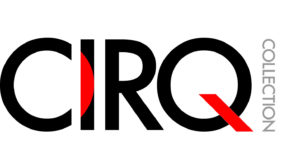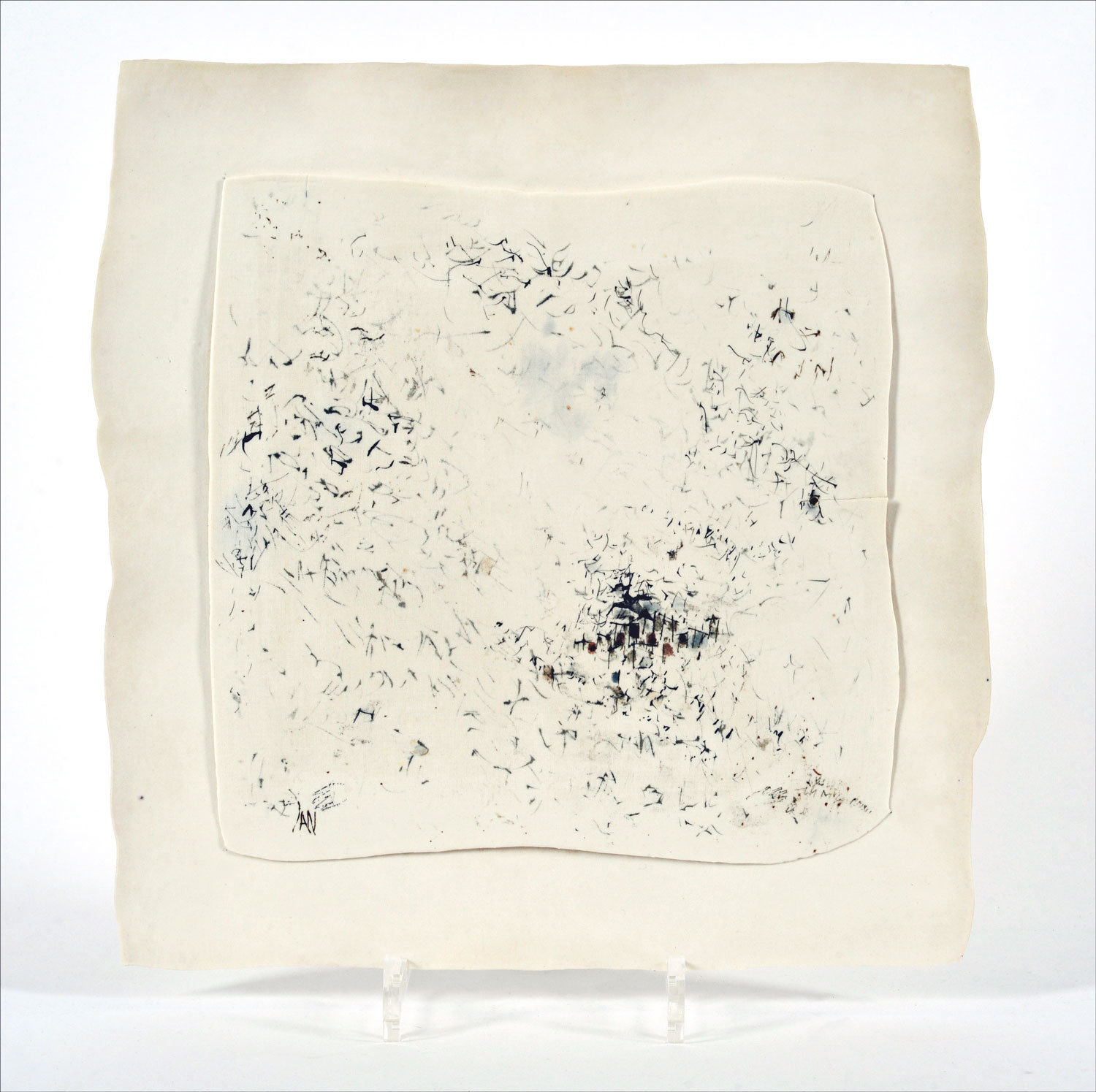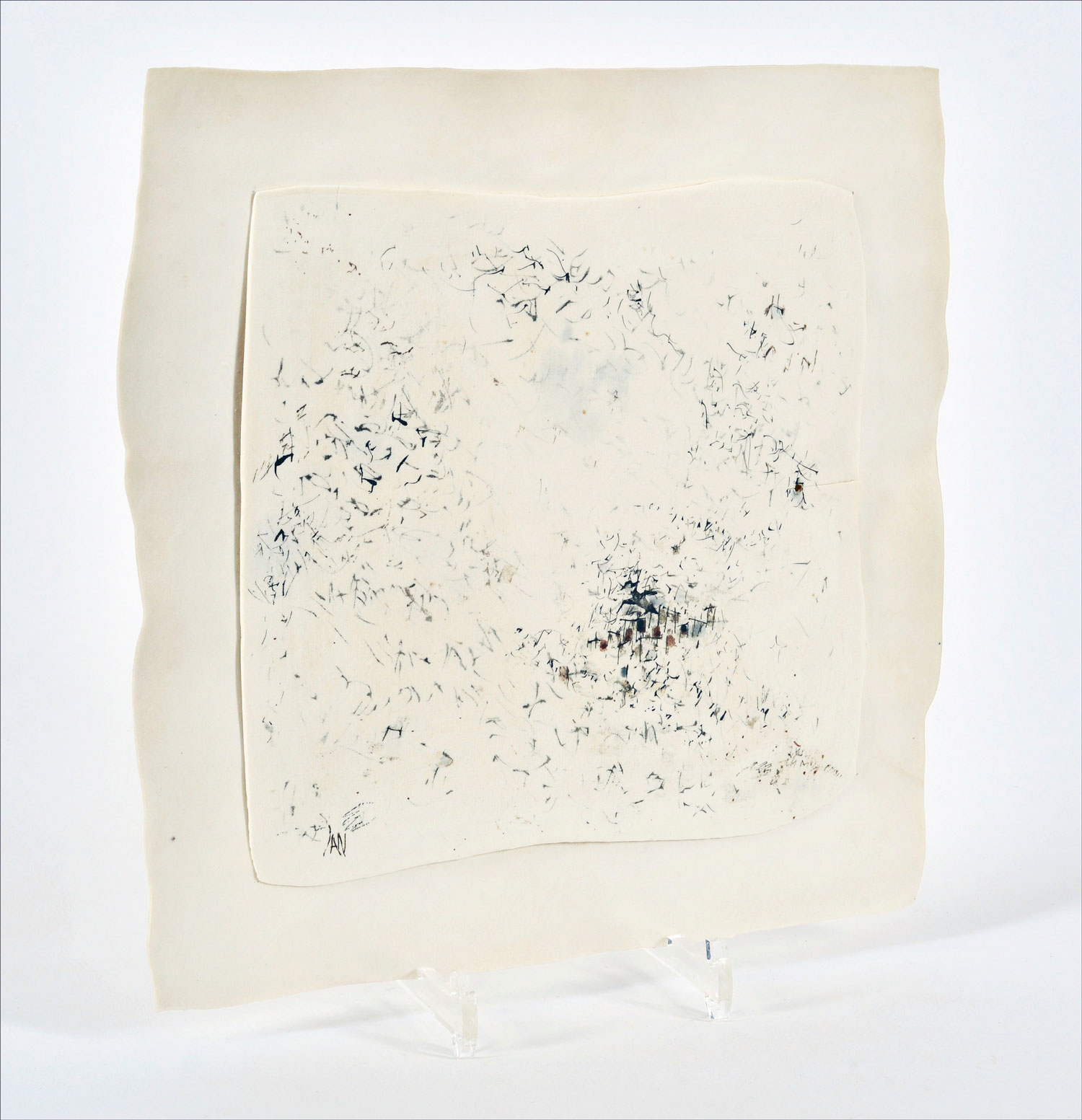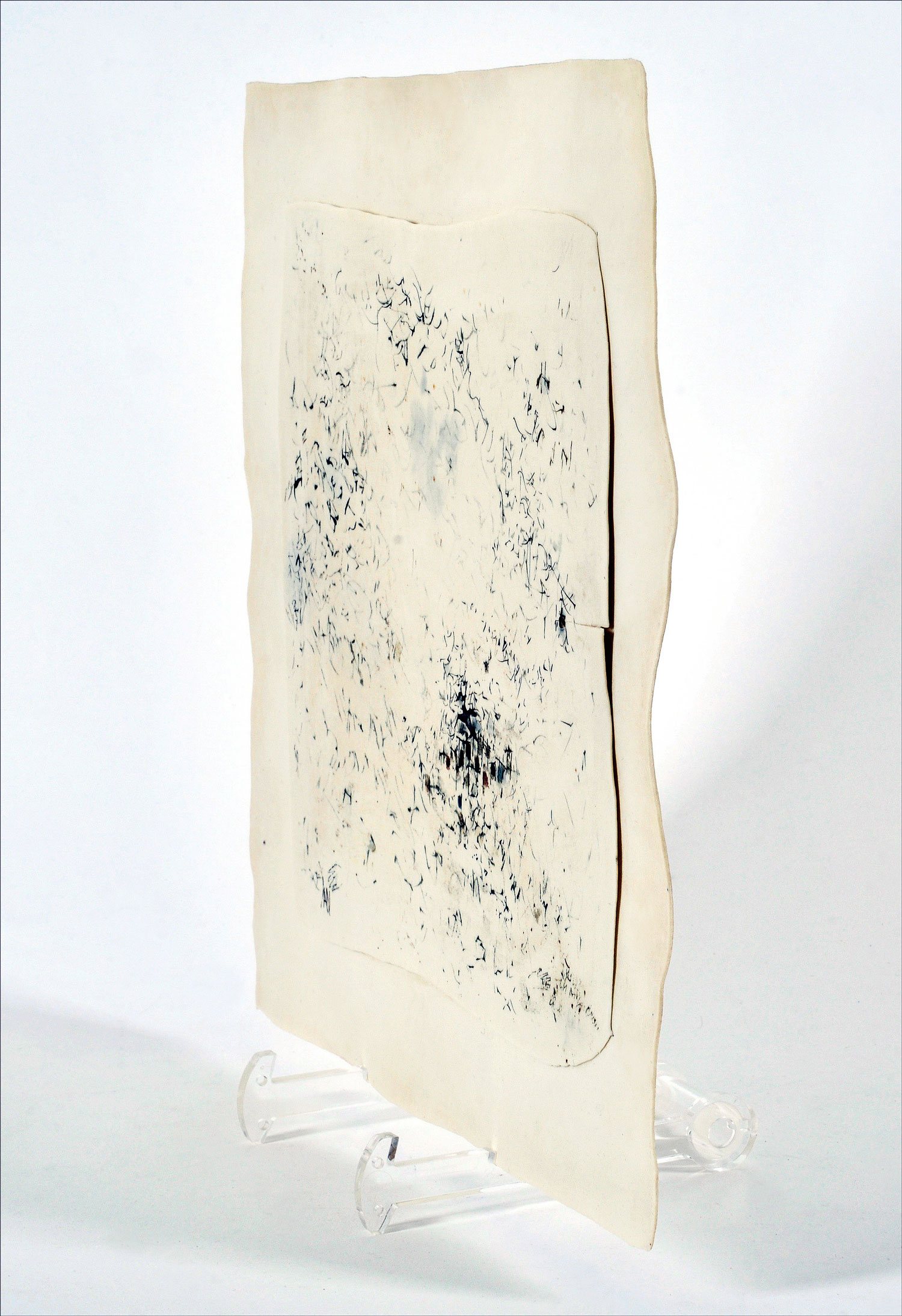Porcelain double plaque ‘Montaillou’ 1985
Artist Jan Oosterman jr. (Blaricum 1911 – Maarssen 1996)
Dimensions 33 x 33 cm
Signed JAN
Condition good (on the right side of the upper plate a shrinkage crack is visible, which apparently was accepted by the artist – see picture 5).
Provenance from the artists’ collection
Jan Oosterman and his wife Anne Oosterman-Weijtjens left for France in 1976. The thin porcelain plaques he made in France in the 1980s were, in a sense, the continuation and culmination of the painted ‘books’ and ‘sheets’ of the 1970s inspired by poems by Bert Schierbeek.
In this porcelain plaque the historical novel “Montaillou” by E. Le Roy Ladurie was a new source of inspiration. This historical novel tells the story of medieval persecution of heretic in the South of France. The inhabitants of the mountain village, the shepherds with their flocks, their houses return to the plates over and again.
On the right side of the upper plate a shrinkage crack is visible, which apparently was accepted by the artist (see picture 5).
75 Porcelain plagues were exhibited during the exhibition “Jan Oosterman 75: recente porseleinbladen” in Galerie Amphora in Oosterbeek, March 1986.
The catalog of this exhibition has been added.
———
Porseleinen dubbelblad ‘Montaillou’ 1985
Afmeting 33 x 33 cm
Gesigneerd JAN
Conditie goed (aan de rechter zijkant van de bovenste plaat is een krimpscheur (zie foto 4), ontstaan en geaccepteerd door de kunstenaar)
Herkomst uit de collectie van de kunstenaar
Jan Oosterman en zijn vrouw Anne Oosterman-Weijtjens vertrokken in 1976 naar Rousset-les-Vignes, een dorp uit de 15e eeuw in Frankrijk.
De dunne porseleinen bladen die hij hier in de jaren tachtig in maakte, waren in zekere zin het vervolg en het hoogtepunt van de geschilderde ‘boekjes’ en ‘bladen’ uit de jaren zeventig geïnspireerd.door gedichten van Bert Schierbeek.
In dit blad van porselein vormde de historische roman “Montaillou” van E. Le Roy Ladurie een nieuwe inspiratiebron. Deze roman vertelt het verhaal van de middeleeuwse vervolging van ketters in Zuid-Frankrijk. De bewoners van het bergdorp, de herders met hun kudden, hun huizen keren telkens terug op de bladen.
Het hier aangeboden blad werd tentoongesteld tijdens de tentoonstelling “Jan Oosterman 75: recente porseleinbladen” in Galerie Amphora te Oosterbeek, maart 1986.
De catalogus van deze tentoonstelling is toegevoegd.



